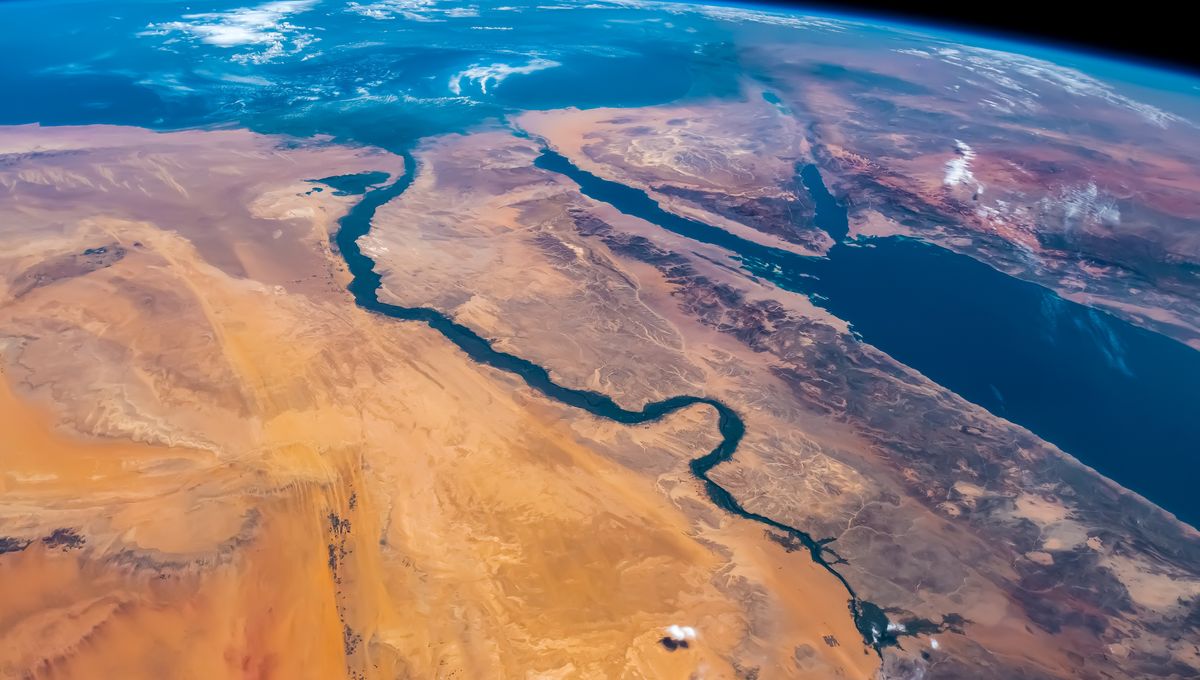
For Ancient Egyptians, the Nile was the source of life itself: it irrigated their crops and fed their animals; it was a highway and a compass; it even underpinned their religious beliefs. But while some of the Ancient Egyptians’ beliefs may seem naïve – even amusing – to us here in the 21st century, a new study out of the University of Southampton has shown that on this one, at least, they were right on the money.
“Although the Nile is one of the largest rivers in the world and played a central role in ancient Egyptian life, little is known about its response to climatic change during the Holocene,” explains the paper.
But “climatic and environmental changes have shaped the landscape of the Egyptian Nile Valley over the past 11,500 years, including the civilization of ancient Egypt,” the authors write – to the extent that the river’s evolution over this time may be what allowed the pharaonic society to thrive at all.
“UNESCO World Heritage sites such as the Karnak and Luxor temples [are] located east of the present Nile and the royal cult temples and necropoleis [are] on the western desert margin – places that were both physically and mythologically connected to the fluvial landscape,” the authors explain. “In addition, it is possible that the changing environment also impacted the regional agro-economy, which was of critical importance to the success of the ancient Egyptian state.”
It’s a big step in the field of Nile-ology. That’s partly because of a lack of investigation at all, the paper notes, with most previous research on the river being carried out in a few select spots, and hardly any concentrating on how the Nile itself shifted and reshaped itself over time. But equally, there’s the technological aspect of such an undertaking: the fact is, the researchers point out, that there’s simply not been enough data so far to make reliable reconstructions of the Nile’s evolution possible.
So, the team decided to find the information for themselves. “We drilled 81 boreholes, many by hand, across the whole Nile Valley near Luxor – a genuine first for Egypt,” explained Dominic Barker, a Technician in Archaeology at the University of Southampton and one of the co-authors of the paper, in a statement.
“Using geological information contained within the cores, and dating the sediments using a technique called Optically Stimulated Luminescence we were able to piece together the evolution of the riverine landscape.”
And what they discovered may hold the key to ancient Egypt’s success. It happened suddenly, they found, about 4,000 years ago, when the Nile underwent a major change in its behavior and environment: after some 7,500 years of significant valley incision, in which the river would have been quite narrow, cutting deep into the bedrock below, it abruptly shifted. Now, large amounts of sediment were being deposited on the valley floor, building up the riverbed and greatly increasing and stabilizing the surrounding floodplain.
“The expansion of the floodplain will have greatly enlarged the area of arable land in the Nile Valley near Luxor (ancient Thebes) and improved the fertility of the soil by regularly depositing fertile silts,” explained Benjamin Pennington, a Visiting Fellow in Geography and Environmental Science at the University of Southampton and co-author of the paper.
It also marked the start of the evolution towards today’s iconic mega-river – a characterization that didn’t really exist until about 2,000 years ago, the researchers explained. “The Egyptian Nile we see today looks very different from how it would have been throughout much of the last 11,500 years,” said Pennington. “For most of this time, the Nile was made up of a network of interwoven channels that frequently changed their course.”
What prompted such a sudden and drastic change? It’s not certain, but the answer likely comes down to the once-lush Sahara desert – and, more specifically, its move towards becoming the sandy expanse we know today. Combined with the impacts of human settlements, this new arid environment would have increased the levels of fine sediment in the river and decreased the volume of water, thus transforming the characteristics of the Nile.
And while the case for this being the catalyst for the Egyptian civilization isn’t water-tight, the timing is definitely noteworthy. This major change to the most important river in Northern Africa seems to have occurred roughly exactly at the shift from the Old to the New Kingdom – a time when Egyptian civilization went through a period of never-before-seen prosperity and achievement.
“No specific causal links can be inferred between this shift and any contemporaneous social developments,” cautioned Pennington. “[But] the changes in the landscape are nonetheless an important factor that need to be considered when discussing the trajectory of Ancient Egyptian culture.”
The study is published in the journal Nature Geoscience.
Source Link: A Sudden Climatic Change In The Nile May Have Kickstarted Ancient Egypt's Prosperity